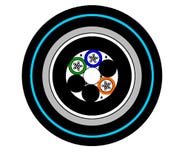

What is fibre optic?
An optical fibre is a glass or plastic fibre that carries light along its length. Optical fibres are widely used in fibre optic communication, which permits transmission over longer distances and at higher data rates than other forms of communications. Fibres are used instead of metal wires as signals travel along them faster with less loss.
MSS Data Solutions equips businesses with fibre optic communications cabling to unleash their potential. Contact us on 1800 328 200 to discuss your requirements.
Advantage over copper
Fibre optic cables have many advantages that cannot be matched via copper or wireless transmission. This includes:
- Optical fibre can transport more information over much longer distances in less transmission time. This is because fibre has less attenuation (loss) and more bandwidth (capacity). Aside from distance and speed, optical transmission cannot be affected by electromagnetic interferences, making it handy to use in environments where this is a problem. Fibre is also relatively secure since the optical transmission cannot be tapped as easily as electrical transmission.
- Speed: Fibre optic networks operate at greater speeds - up into the 40/100 gigabits.
- Bandwidth: Communications can be transmitted further without needing to be “refreshed” or strengthened.
- Resistance: Greater resistance to electromagnetic interferences such as radios, motors or other nearby cables.
- Maintenance: Fibre optic cables costs much less to maintain.
- Higher carrying capacity: Because optical fibres are thinner than copper wires, more fibres can be bundled into a given-diameter cable than copper wires.
- Non-flammable: Because no electricity is passed through optical fibres, there is no fire hazard
MSS Data Solutions equips businesses with fibre optic communications cabling to unleash their potential. Contact us on 1800 328 200 to discuss your requirements.
Recent Articles

Test Network Cabling & Patch Cords FAST with the New DATATESTER by CABAC
Testing LAN cables is quick and easy when you’ve got the new CABAC DATATESTER on hand. This budget LAN cable tester is perfect for contractors who need to test data and coaxial cable for correct termination.
Read More
Exploring the Advantages of Thin Patch Leads
For Australian data installers, selecting the right network components is critical to achieving the performance and reliability that your customers expect. Among these components, the humble patch lead plays a crucial role in interconnecting various devices.
Read More
FOBOT Buying Guide
In this informative article, we will provide a basic buying guide for FOBOTs or “Fibre Optic Break Out Trays” so that you can choose the right product for your specific needs.
Read More




















